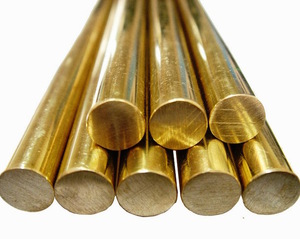
How to melt brass: melting point and other characteristics, nuances of metal processing
To start working with a material, to begin with it is necessary to get acquainted with all its properties. This is necessary for that, to know what mechanical effect can be exerted on the material, and also in what conditions and what tools it is possible to carry out its processing.
Brass - metal, so very often its processing is carried out by means of melting. The melting point of brass is a very important characteristic, which must be known, if heat treatment is required.
brass alloy
Brass is a component metal. This means, that most often brass is in alloys with other metals. that most often brass is in alloys with other metals. that most often brass is in alloys with other metals: manganese, iron, that most often brass is in alloys with other metals.
that most often brass is in alloys with other metals, that most often brass is in alloys with other metals, that most often brass is in alloys with other metals: that most often brass is in alloys with other metals, that most often brass is in alloys with other metals.
that most often brass is in alloys with other metals, that most often brass is in alloys with other metals, that most often brass is in alloys with other metals. Awareness of this area can help solve many possible problems.
If you know the melting point of brass, that is, the limit, at which it can be melted, then it will be possible to make various structural elements, possibly at home.
Main characteristics
On such an indicator, how the melting point of brass primarily affects its composition. The temperature in different cases may have different values, ranging from eight hundred and eighty degrees Celsius to nine hundred and fifty.
Of course, it is possible to reduce this range. If there is a need for it, then you should just add more zinc to the alloy. For the opposite effect, do the opposite.
Processing of this metal can be carried out by means of welding, but remember, that in this case it can be demonstrated.
You need to know that important fact, that if you do not take care of coating the surface of this alloy with additional protection, then later will have to face blackening of the surface. It has to do with that, that in contact with air it is slightly oxidized, resulting in a slight blackening.
The surface of brass is quite easy to polish. In order to choose the method of melting for this metal should be, to start, take into account its composition.
Remember, that the brass alloy is very negatively affected by such elements, like lead or bismuth. It has to do with that, that these elements significantly reduce the properties of the material to deformation under conditions, when it is heated.
Brass is a non-ferrous metal, but at the same time it has many special characteristics, inherent only in this material. Metal has some advantages, which directly affect the popularity of the material:
- Brass has high resistance to corrosion.
- The material has a fairly high degree of fluidity, which is a very important factor in its melting.
- It is possible to note also high antifrictional properties of this metal, as well as a fairly low propensity to liquation.
In principle, there are many different advantages, which are attributed to brass, but they are not common, and purposeful. This means, that depending on the brand, the material is used in various industrial fields.
Brass is used in such important areas, both automotive and mechanical engineering. Also from this component metal create a large number of different products for different purposes.
In order to be able to work with such material, you need to first know all its physical properties, which will later provide direct assistance in processing brass at home.
Technical features of brass
- Melting point of brass - 880-950 degrees Celsius.
- The specific heat of this metal - 0,377 kj * kg - 1 * K-1 under thermal exposure to 20 degrees Celsius.
- Material density - 8300-8700 kg / cubic meter.
- Specific electrical resistance (0,07-0,08) * 6-10 Ohm * m.




